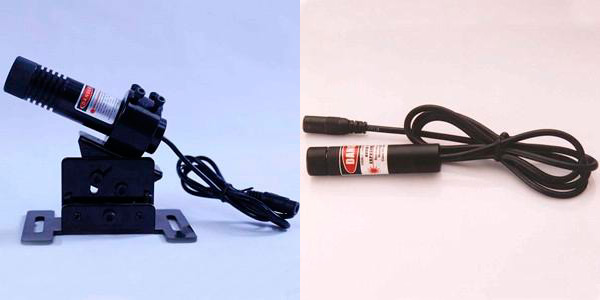According to the analysis of laser generation principle, laser is under the action of "excitation source", the number of high level electrons of atoms increases, and after staying for a very short time, they jump to low level and emit laser at the same time. It is not hard to see that there must be many, many atoms of matter that can emit laser light under the action of "excitation source".
Laser performance indicators are mainly focused on the following aspects: one is the frequency range of the laser beam, because the laser can do "excitation source", can also do spectrum analysis of the light source, so it is necessary to know the laser spectrum; Second, the power of the laser beam, especially the maximum power, because the power size delineates the scope of application of the laser; The third is the irradiation area of laser beam energy concentration, because the irradiation area size is different applications are also different.

To create a laser generator, there are four elements: first, choose the working medium to produce laser. It can be gas, liquid, solid or semiconductor, as long as the particle number inversion can be achieved in the medium, the laser can be obtained. Second, it is important to choose a source of motivation. The "excitation source" allows the medium's lower energy electrons to effectively jump to a higher energy state, in what is known as electron number inversion. Can use the gas discharge method, the use of kinetic energy of the electron to excite the medium atom, called electric excitation; Pulsed light source can also be used to illuminate the working medium, called light excitation; There are thermal excitation, chemical excitation and so on. Various forms of excitation are figuratively called pumping or pumping. The purpose of the pump is to have more particles at higher energy levels than at lower ones. Third, the construction of resonator is also very important. Because the laser produced by "pumping" is too weak to be used in practice, the weak laser needs to be resonated with the laser and the output laser strengthened to achieve practical application.Fourth, high energy lasers need cooling systems. Because there is strong light in the cavity, the cavity needs cooling.
Laser generator according to the working medium of laser can be divided into: solid laser, gas laser, semiconductor laser, chemical laser.
Solid state laser. Lasers can be made from many solid substances. In particular, with artificial synthetic method, with ceramic manufacturing process, can produce crystals containing different components, known as "transparent ceramic laser medium", now, with artificial crystals to make the laser is very convenient and practical.
Gas laser. There are many kinds of gas lasers, among which the most commonly used is carbon dioxide laser.CO₂ laser, the main use of CO₂ gas, but also a small amount of nitrogen and helium, the same use of "pump source" excitation, so that the gas molecules produce energy level transition, so as to excite the laser.CO₂ laser is to excite the molecular level to obtain the laser, its working principle is more complex, because the molecule has three different motion, the state of molecular motion is complex, the energy level is complex, so the energy level transition process of the excitation molecule is also complex.
Semiconductor lasers. At present, GaAs diode semiconductor laser has good performance and wide application in semiconductor laser devices. The laser is to use current excitation mode, in the semiconductor material between the energy band, to achieve the particle number of non-equilibrium carrier inversion, when the inversion state of electrons and holes recombination will produce laser. Can emit visible laser light, can also emit near infrared or ultraviolet light. Semiconductor diode laser is the most practical and important kind of laser. It has small size, light weight, reliable operation, low power consumption, high efficiency and long life. It is compatible with integrated circuits because voltage and current excitation can be used. It can also directly modulate current at frequencies up to GHz to obtain high speed modulated laser output.Because of these advantages, semiconductor diode lasers have been widely used in laser communication, optical storage, optical gyroscope, laser printing, ranging and radar.
Chemical lasers. Chemical lasers are produced by chemical reactions. For example, when fluorine and hydrogen atoms react, hydrogen fluoride can be formed in an excited state. In this way, when the two ionic gases are mixed quickly, the laser is produced, so that no other energy is needed to get very powerful light energy directly from the chemical reaction.